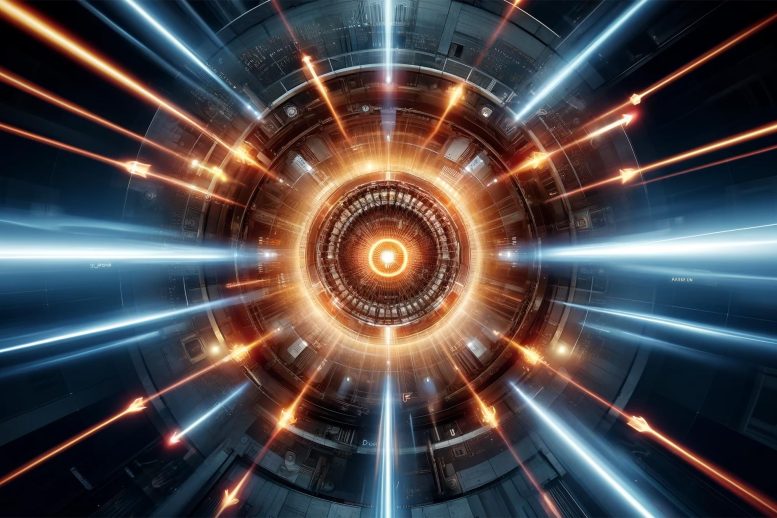
Recent research has revealed that a photon’s polarization is a topological property that remains constant across different environments, an insight that could enhance fusion research by improving the design of light beams used in plasma heating. Credit: SciTechDaily
New studies show photon polarization is constant in varying environments, potentially improving plasma heating methods for fusion energy advancement.
Light, both literally and figuratively, pervades our world. It eliminates darkness, conveys telecommunications signals across continents, and reveals the unseen, from distant galaxies to microscopic bacteria. Light can also help heat the plasma within ring-shaped devices known as tokamaks as scientists work to leverage the fusion process to produce green electricity.
Recently, researchers from Princeton Plasma Physics Laboratory have discovered that one of the fundamental properties of photons—polarization—is topological, meaning it remains constant even as the photon transitions through various materials and environments. These findings, published in Physical Review D, could lead to more effective plasma heating techniques and advancements in fusion research.
Implications for Fusion Research
Polarization is the direction—left or right—that electric fields take as they travel around a photon. Due to fundamental physical laws, a photon’s polarization dictates the direction it travels and restricts its path. Consequently, a beam of light composed solely of photons with a single type of polarization cannot spread into every part of a given space.
“Having a more accurate understanding of the fundamental nature of photons could lead to scientists designing better light beams for heating and measuring plasma,” said Hong Qin, a principal research physicist at the U.S. Department of Energy’s (DOE) PPPL and co-author of the study.
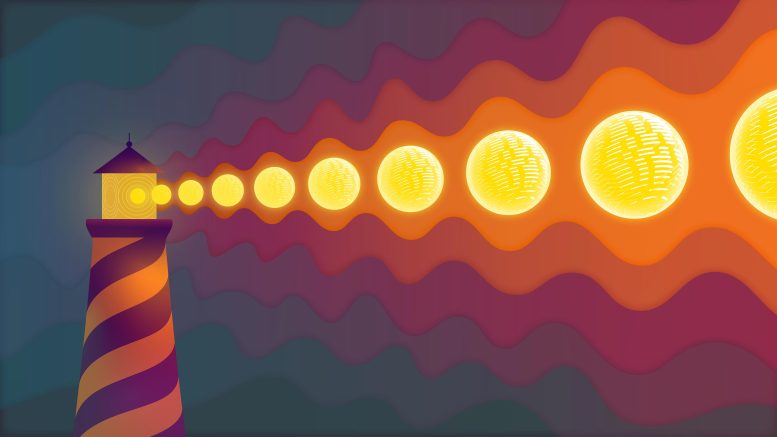
An artist’s conception of photons, the particles that make up light, perturbing plasma. Credit: Kyle Palmer / PPPL Communications Department
Simplifying Complex Problems
The study of photons serves as a means to solve a larger, more difficult problem — how to use beams of intense light to excite long-lasting perturbations in the plasma that could help maintain the high temperatures needed for fusion.
Known as topological waves, these wiggles often occur on the border of two different regions, like plasma and the vacuum in tokamaks at its outer edge. They are not especially exotic — they occur naturally in Earth’s atmosphere, where they help produce El Niño, a gathering of warm water in the Pacific Ocean that affects weather in North and South America. To produce these waves in plasma, scientists must have a greater understanding of light- specifically, the same sort of radio-frequency wave used in microwave ovens — which physicists already use to heat plasma.
“We are trying to find similar waves for fusion,” said Qin. “They are not easily stopped, so if we could create them in plasma, we could increase the efficiency of plasma heating and help create the conditions for fusion.” The technique resembles ringing a bell. Just as using a hammer to hit a bell causes the metal to move in such a way that it creates sound, the scientists want to strike plasma with light so it wiggles in a certain way to create sustained heat.
Unraveling the Nature of Photon Movement
In addition to discovering that a photon’s polarization is topological, the scientists found that the spinning motion of photons could not be separated into internal and external components. Think of Earth: It both spins on its axis, producing day and night and orbits the sun, producing the seasons. These two types of motion typically do not affect each other; for instance, Earth’s rotation around its axis does not depend on its revolution around the sun. In fact, the turning motion of all objects with mass can be separated this way.
However, it was unclear if this was true for particles like photons, which do not have mass. “Most experimentalists assume that the angular momentum of light can be split into spin and orbital angular momentum,” said Eric Palmerduca, lead author of the paper and a graduate student in the Princeton Program in Plasma Physics. “However, among theorists, there has been a long debate about the correct way to do this splitting or whether it is even possible to do this splitting. Our work helps settle this debate, showing that the angular momentum of photons cannot be split into spin and orbital components.”
Moreover, Palmerduca and Qin established that the two movement components can’t be split because of a photon’s topological, unchanging properties, like its polarization. This novel finding has implications for the laboratory. “These results mean that we need a better theoretical explanation of what is going on in our experiments,” Palmerduca said.
These findings provide insights into the behavior of light, furthering the researchers’ goals of creating topological waves for fusion research.
Insights for Theoretical Physics
Palmerduca notes that the photon findings demonstrate PPPL’s strengths in theoretical physics. The findings relate to a mathematical result known as the Hairy Ball Theorem. “The theorem states that if you have a ball covered with hairs, you can’t comb all the hairs flat without creating a cowlick somewhere on the ball. Physicists thought this implied that you could not have a light source that sends photons in all directions at the same time,” Palmerduca said. He and Qin found, however, that this is not correct because the theorem does not take into account, mathematically, that photon electric fields can rotate.
The findings also amend research by former Princeton University Professor of Physics Eugene Wigner, who Palmerduca described as one of the most important theoretical physicists of the 20th century. Wigner realized that using principles derived from Albert Einstein’s theory of relativity, he could describe all the possible elementary particles in the universe, even those that hadn’t been discovered yet. But while his classification system is accurate for particles with mass, it produces inaccurate results for massless particles, like photons. “Qin and I showed that using topology,” Palmerduca said, “we can modify Wigner’s classification for massless particles, giving a description of photons that works in all directions at the same time.”
Future Directions
In future research, Qin and Palmerduca plan to explore how to create beneficial topological waves that heat plasma without making unhelpful varieties that siphon the heat away. “Some deleterious topological waves can be excited unintentionally, and we want to understand them so that they can be removed from the system,” Qin said. “In this sense, topological waves are like new breeds of insects. Some are beneficial for the garden, and some of them are pests.”
Meanwhile, they are excited about the current findings. “We have a clearer theoretical understanding of the photons that could help excite topological waves,” Qin said. “Now it’s time to build something so we can use them in the quest for fusion energy.”
Reference: “Photon topology” by Eric Palmerduca and Hong Qin, 2 April 2024, Physical Review D.
DOI: 10.1103/PhysRevD.109.085005


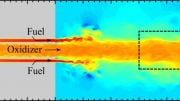

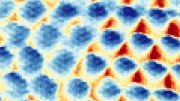
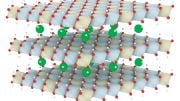
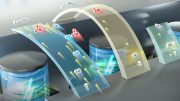


In addition to discovering that a photon’s polarization is topological, the scientists found that the spinning motion of photons could not be separated into internal and external components. Think of Earth: It both spins on its axis, producing day and night and orbits the sun, producing the seasons. These two types of motion typically do not affect each other; for instance, Earth’s rotation around its axis does not depend on its revolution around the sun.
In fact, from cosmic accretion disks to photon spins, topological vortex gravitational fields are ubiquitous, and their synchronous effects dominate the survival and evolution of all things in the universe.
————Extracted from https://zhuanlan.zhihu.com/p/684863580.
Photon 377 ohm farfield impedance is one of many topological impedances, including quantum Hall, Aharonov-Bohm, Chern-Simons, centrifugal, Coriolis, chiral,three-body,…
Impedance matching governs amplitude and phase of energy flow, of information transmission. Perhaps exciting modes of one or more of these phenomena would be useful
Quantum Impedance Networks in Plasma? Ask your
favorite LLM. https://www.researchgate.net/publication/378149429_Profound_Impact_of_Quantum_Impedance_Networks_QINs_on_Science_and_Society?channel=doi&linkId=65ca416d1e1ec12eff8a590d&showFulltext=true
Dear friend,
String theory cannot answer the origin of gravitation and may be a pseudoscience. Drawing on the strengths of others may inspire you. If you are willing to further consider, you can browse https://zhuanlan.zhihu.com/p/697274113 and https://zhuanlan.zhihu.com/p/695926158.